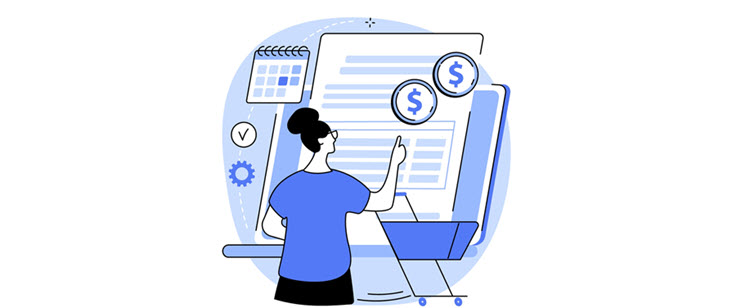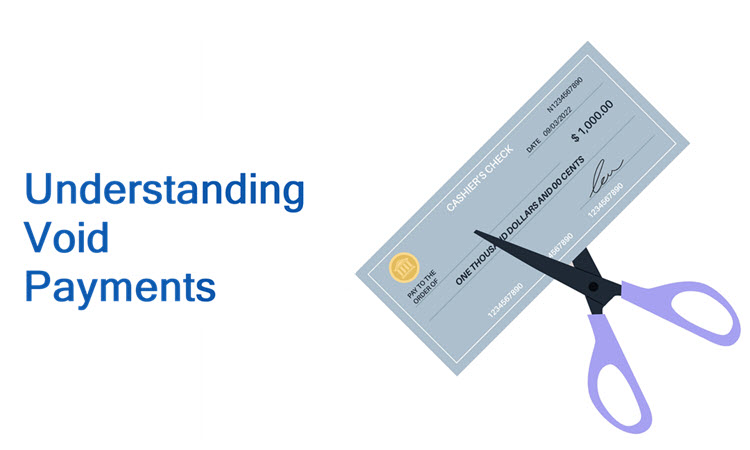When a customer makes a purchase with a credit or debit card, the payment doesn’t happen instantly. It takes the credit card association and banks between 24 and 72 hours to process and transfer the money to the merchant. That gives the merchant enough time to void the payment, if necessary.
This article explains what a void payment i.e. void transaction is, how it works, how it’s different than a refund and when it’s necessary to void a payment.
What Is a Void Payment?

A void payment is a cancellation of a transaction before the money is transferred to the merchant’s account.
Payments can be voided by the merchant or the cardholder’s bank if they suspect a mistaken, incorrect, or fraudulent payment activity.
How Do Void Payments Work?
When a customer makes a purchase using a credit or debit card, there is a certain amount of time when they can cancel the transaction. The window of opportunity is after payment authorization and before payment settlement.
Authorization and Settlement

When a customer swipes their card or enters their card details at the point of sale, the payment processor starts the verification process. If the card is valid and there are enough funds for the purchase on the customer’s account, the payment processor authorizes the payment.
The merchant’s payment processor binds the transaction with all other purchases that occurred during the day and sends it to the card issuing bank. If the issuing bank approves the transaction, the funds are settled and ready to be transferred to the merchant’s account.
Note: Learn everything you need to know about how payment processing works.
The Process of Voiding a Payment

Once the customer or merchant notices a mistake in the purchase or some other reason for voiding the transaction, the merchant voids it through their payment system (POS terminal, payment gateway interface, or admin panel). The transaction is deleted from the batch of transactions that are usually processed at the end of the work day.
After the payment has been voided, it may appear on the customer’s bank account transaction list as a pending transaction. It usually clears after 24-72 hours. During that time, the funds are reserved, and the cardholder can’t use them.
If the funds are unavailable after three days, the customer should request from their card issuing bank to release the funds.
Note: Void transactions don’t appear on the customer’s bank statement.
Examples of Void Payments
Payments are usually voided in the following situations:
Accidental Charge
An accidental charge is when a customer mistakenly makes an unwanted purchase or when a vendor charges the customer for a product or service they didn’t purchase. If the customer or vendor notices the accidental charge on time, the vendor voids the payment.
Incorrect Charge
If a vendor or customer notices a mistake in the amount for payment soon after the payment has been made, the vendor voids the payment.
Fraudulent Transaction
When someone makes a purchase using a stolen card, and the cardholder or the card issuing bank notices it, the bank voids the transaction.
Cancellation Policy for Online Purchases
Some ecommerce shops have a 24-hour cancellation policy. Customers use it to void a transaction if they change their mind after making a purchase online.
Void Payment vs. Refunds
Payments can only be voided if the transaction hasn’t settled. If the funds have already been transferred to the merchant, the vendor can issue a refund instead.
The customer may wait for the refund for up to 30 days.
| Void Payment | Refund | |
|---|---|---|
| What is it? | Canceled payment before the funds are transferred to the merchant. | Reversed payment. The funds are returned from the merchant to the customer’s account. |
| Does it appear in the customer’s bank account? | It may appear on the transaction list as a pending transaction. It doesn’t stay on the bank statement. | It appears on the bank statement with other transactions. |
| How long are the funds reserved? | Up to three days. | Up to 30 days. |
Note: Learn also about the differences between chargebacks and refunds.
Conclusion
Paying with a credit card may seem like an instant process. However, there is a window of opportunity for the customer to request a void payment between payment authorization and transaction settlement.
If the customer and the merchant react quickly, they can avoid a refund - a more complicated process that may hold the customer’s funds for a longer period.
